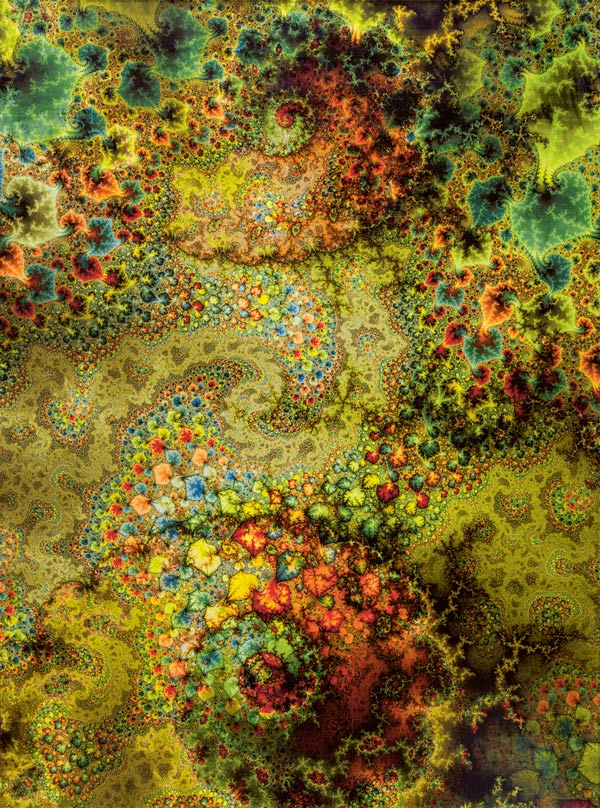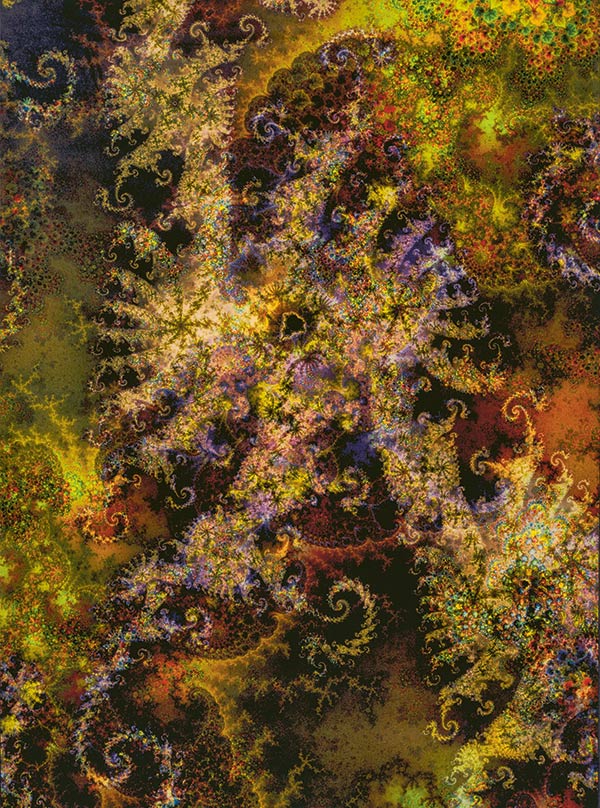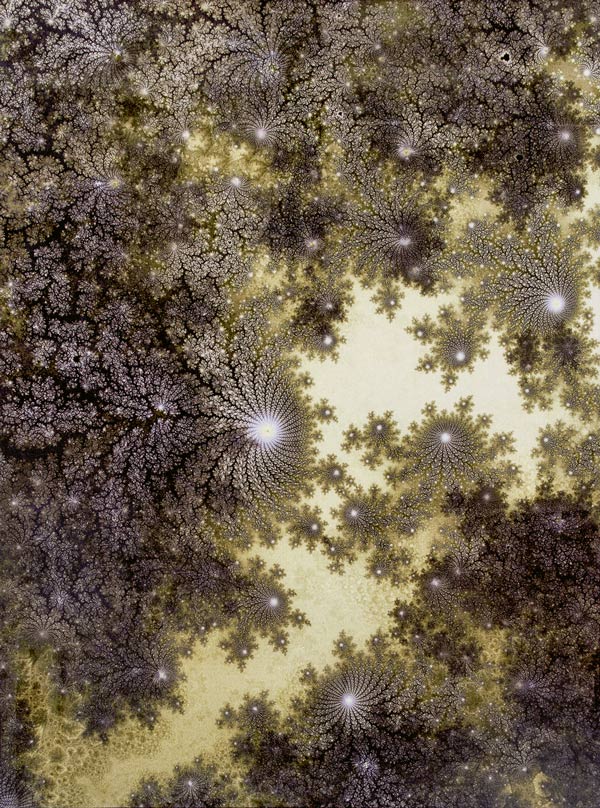
Thomas Ruff, d.o.pe.01, 2022
Colaris Teppichdruck, 267 × 200 cm

Thomas Ruff, d.o.pe.09 I, 2022
Colaris Teppichdruck, 267 × 200 cm

Thomas Ruff, d.o.pe.07, 2022
Colaris Teppichdruck, 267 × 200 cm
Alle Werke: Emanuel Hoffmann-Stiftung, Depositum in der Öffentlichen Kunstsammlung Basel, Fotos: David Zwirner, New York, 2022, © 2023, ProLitteris, Zurich
Mesmerized by the soft texture, our gaze follows the impression of growing plants, mysterious galaxies, or ripples of foliage on greenish waters. The patterns on Thomas Ruff’s tapestries have one thing in common: they show fractals, that is, structures whose internal mathematical laws can lead to digitally generated shapes of blossoms, stars, and snails. These can also occur in nature, for instance, as in the structure of fern, crystals, or cabbage. Fractals are characterized by the infinite repetition of their own form, also known as self-similarity.
In his practice, Ruff repeatedly appropriates image-generating tools and explores the potential of photography to define our image of humanity and the world. Using fractal software, he probes an infinite, visual universe and generates renderings that challenge the term “nature.” The artist’s prints on velour carpets chart new territory. The opulent splendor of his pictorial inventions appeared flat and insignificant on Kodak paper, but thanks to technological advances, the carpets convey depth and brilliant colors. Ruff has created a hybrid between renderings, photo art, painting, and object.
The title d.o.pe. refers to Aldous Huxley’s account of his experience with the hallucinogen mescaline in his autobiographical book The Doors of Perception (1954). The book inspired the hippie movement, which also shaped Ruff’s memories of his youth. The artist’s fascination with the beauty of mathematical phenomena seminally influenced the seductive magnetism of moving color and shape in his d.o.pe. series.
Thomas Ruff (*1958 Zell am Harmersbach, Deutschland) erforscht mit Fotografie Wahrnehmung, Imagination und deren Grenzen. Von der analogen Fotografie über die Möglichkeiten der digitalen Bildbearbeitung bis hin zu komplett computersimulierten Bildern, setzt sich Ruff immer wieder mit neuen technologischen Mitteln auseinander. Thomas Ruff lebt und arbeitet in Düsseldorf.
